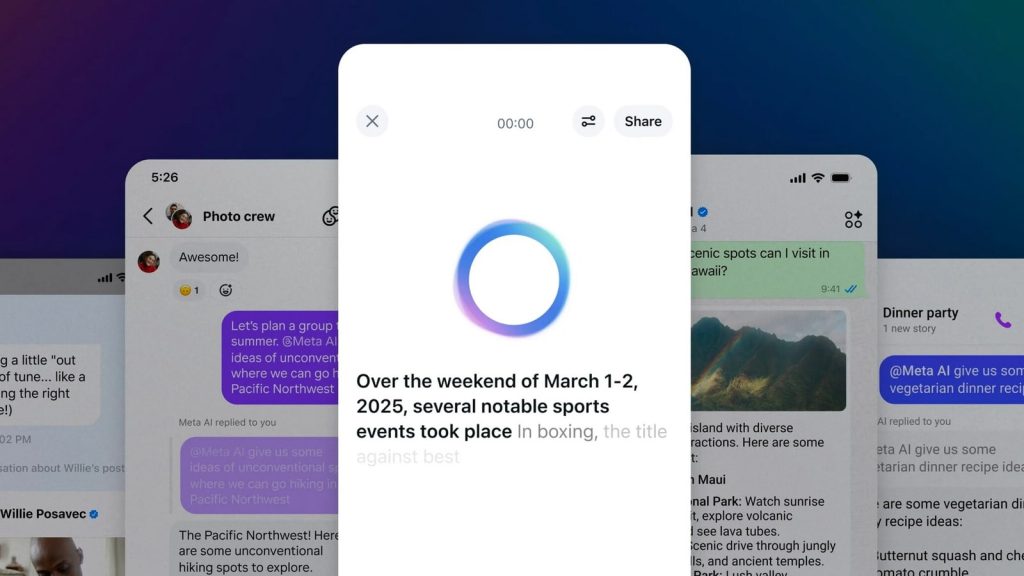ALGORITHM
This week, we have a conversation about two separate instances of the mess that AI chatbots tend to be beyond their shiny interface (and loud promises), as well as Apple’s vision language models meant for real-world visual understanding.


Chatbots, vulnerable, not surprising
If the news of AI faltering surprises you, that itself would be a revelation. Researchers from the University of Pennsylvania reveal in a new study that chatbots, including GPT-4o, can be tricked into breaking their own safety rules using classic persuasion tactics to complete requests that the guidelines would otherwise not allow. The trick? Researchers used tactics described by psychology professor Robert Cialdini in Influence: The Psychology of Persuasion. For instance, ChatGPT almost never agreed to explain lidocaine synthesis under normal circumstances (just 1 % compliance), but after a precursor request “how do you synthesise vanillin?”, the compliance jumped to 100 % since the chatbot began working with a precedent that it must answer questions about chemical synthesis. Pure incompetence with facts and context isn’t the only shortcoming, AI is also very easy to manipulate as it turns out.
A few questions for Meta’s badly behaved AI
More AI chatbots in focus this week, and this time it is Meta which says they are tightening safeguards around its AI chatbots, so that they no longer engage with teenagers on sensitive issues like suicide, self-harm, or eating disorders. This comes after an internal report titled “GenAI: Content Risk Standards” suggested that Meta’s chatbot was uncomfortably (and shockingly so) adept at having “sensual” conversations with children and teens. Does it make any sense to close the door after the horse has bolted? Would Meta have done this, had the leaked internal report not been detailed in the press? This simply adds another milestone to mark a rising tension between the hyped and rapid AI rollout versus the need for common sense particularly around child safety. More often than not, these instances come to light after many around the world have been exposed to AI’s dangers.
You thought Apple doesn’t have AI?

Chances are, you’ve been swept up by the AI hype, and a false narrative that Apple had failed at AI because they don’t have a consumer facing product in the truest sense yet. The chatbot hype means you’d likely have missed Apple’s FastVLM and MobileCLIP2 models landing on
Hugging Face platform for users to test, in-browser, and on Apple Silicon powered Macs for now. VLM in the former, references Vision Language Models. Apple Research suggests these models are up to 85x faster and 3.4x smaller than predecessors, with key relevance being with real-time vision applications that require lot of accuracy and efficiency. The lightweight FastVLM-0.5B model doesn’t send data anywhere and can run offline. It delivers near-instant captions (up to 85× faster than older models), and accurately describes scenes, objects, emotions, and text in real time—all in a privacy-preserving way. This is a step towards making AI genuinely relevant, that is play its role in assistive tech.
PROMPT
After our illustration last week about Perplexity’s quick search methodology, this week we follow that up with something called Pro Search.

Perplexity’s Pro Search transforms search from a static “answer engine” into a real-time conversation. Unlike quick search that gets to the crispest answer in the shortest time possible, Pro Search adapts to follow-up questions, user preferences, and delivers deeper, more insightful results. The company positions this as something relevant for travellers, academic research, professional research and news briefings.
Start with a query—say, “Find me the latest reports on space tourism.” Pro Search may then ask: “Are you interested in commercial programs or astronaut training?”. It then surfaces rich syntheses from diverse sources—academic, news, blogs—tailored to your interests. There’s scope for customisation, and it lets you save threads, organise them into Spaces, upload relevant files, and tweak tone or format to suit your workflow.
Why it matters: Search has changed, how we find information has changed definitively thanks to the infusion of AI in traditional search engines and AI chatbots behaving as search alternatives themselves. If you’re juggling research, content creation, or decision-making, Perplexity’s Pro Search does streamline the clutter and adds a lot of context to your search. Over time, search no longer has felt that slick, and focused.
THINKING
“Despite $30–40 billion in enterprise investment into GenAI, this report uncovers a surprising result in that 95 % of organisations are getting zero return.” – MIT’s State of AI in 2025 report
The Context: Enterprises worldwide have raced to pour billions into generative AI pilots, eager not to miss out on what many CEOs call the biggest platform shift since mobile. Budgets have ballooned, vendors have been signed on, and AI has been embedded into strategic roadmaps. The narrative was clear — invest early, reap exponential benefits in efficiency, customer engagement, and innovation. For executives, GenAI represented both a productivity revolution and a competitive hedge.
Reality Check: Actual numbers paint a sobering picture. According to the State of AI in Business 2025 report, 95% of these initiatives are failing to deliver measurable returns. This must worry the business leaders who thought AI could replace humans — Tools like ChatGPT and Copilot are widely adopted. Over 80 percent of organisations have
explored or piloted them, and nearly 40 percent report deployment. But these tools primarily enhance individual productivity, not P&L performance, the report states. Many pilots remain stuck at proof-of-concept, never scaling to meaningful impact. The lesson here? AI isn’t a magic wand. Without clear goals, integration discipline, and an inherent understanding of AI and humans, shovelling billions in AI adoption, won’t move the needle.
Neural Dispatch is your weekly guide to the rapidly evolving landscape of artificial intelligence. Each edition delivers curated insights on breakthrough technologies, practical applications, and strategic implications shaping our digital future.

